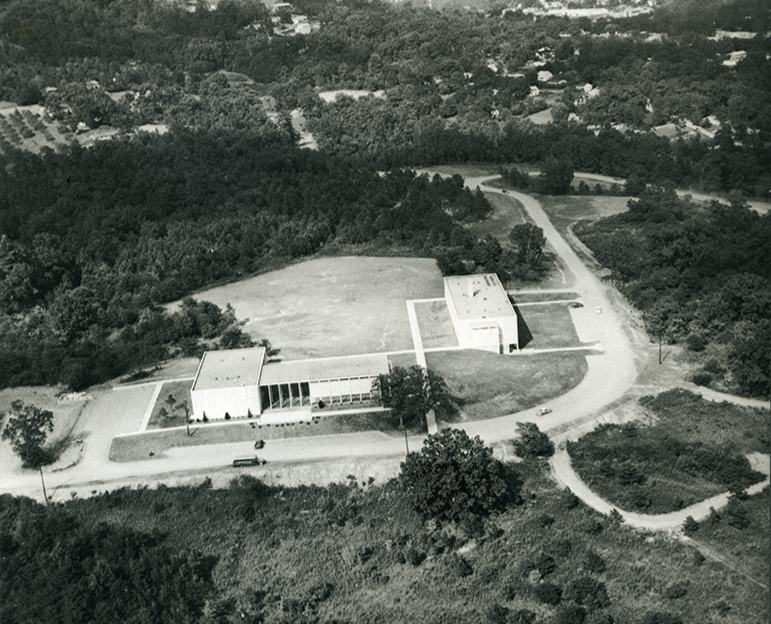
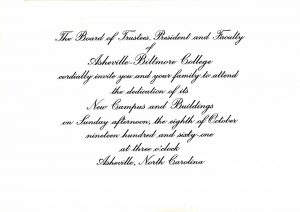
The 1958 bond issue had not been without some controversy. Although there was general support in favor of the bond issue, there was disapproval from some members of the African-American community. In 1958, Asheville-Biltmore was still an all-white college, and, when the trustees announced plans for the bond issue, they also revealed their intentions to continue segregation of the campus. This drew opposition from the Asheville branch of the NAACP, and the Asheville-Buncombe County Citizen’s Organization, who argued that “segregation is dead”, and consequently did not support the bond issue. However, despite this opposition, the bond issue won three-to-one approval, and even precincts with a high proportion of African-Americans voted in favor by substantial majorities.
Clearly two buildings were not going to be sufficient for the college’s immediate needs, never mind any future growth, so, throughout 1960, the Board of Trustees reviewed plans for additional buildings, and how to pay for them. At the November 1960 trustees meeting, a resolution that funds be raised through a bond issued and a tax levy was approved, with the trustees stating, “the further progress, growth, and service of the College will be greatly hampered unless additional educational buildings are constructed and equipped”.
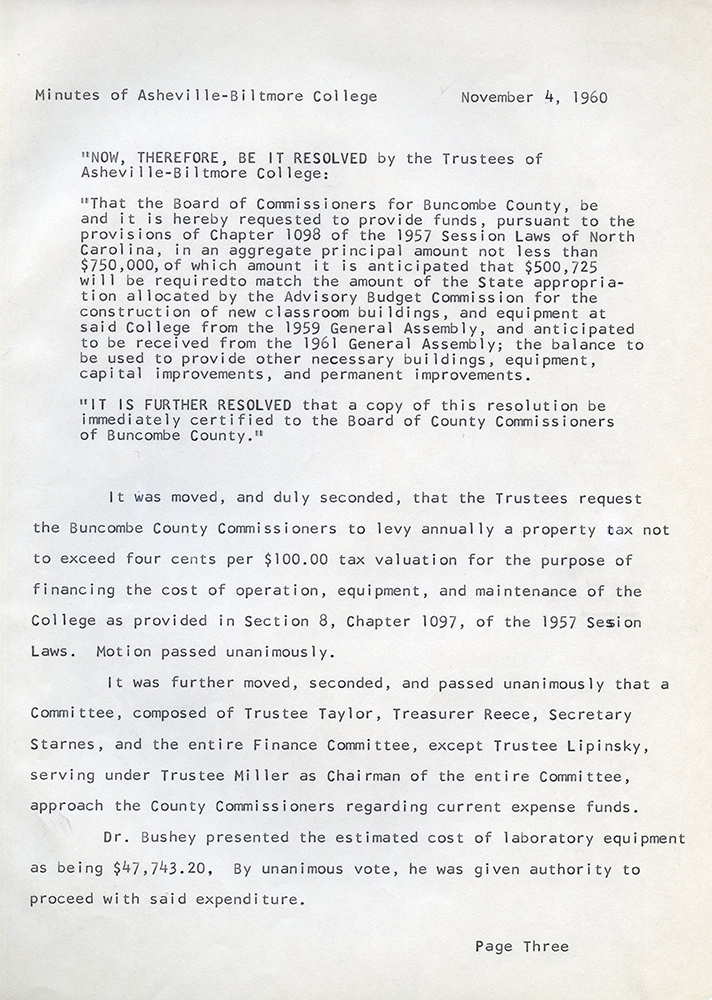
- A $750,000 bond issue (with matching state funds) to construct five additional buildings
- A tax levy to pay the college operating costs, again with matching funds from the state
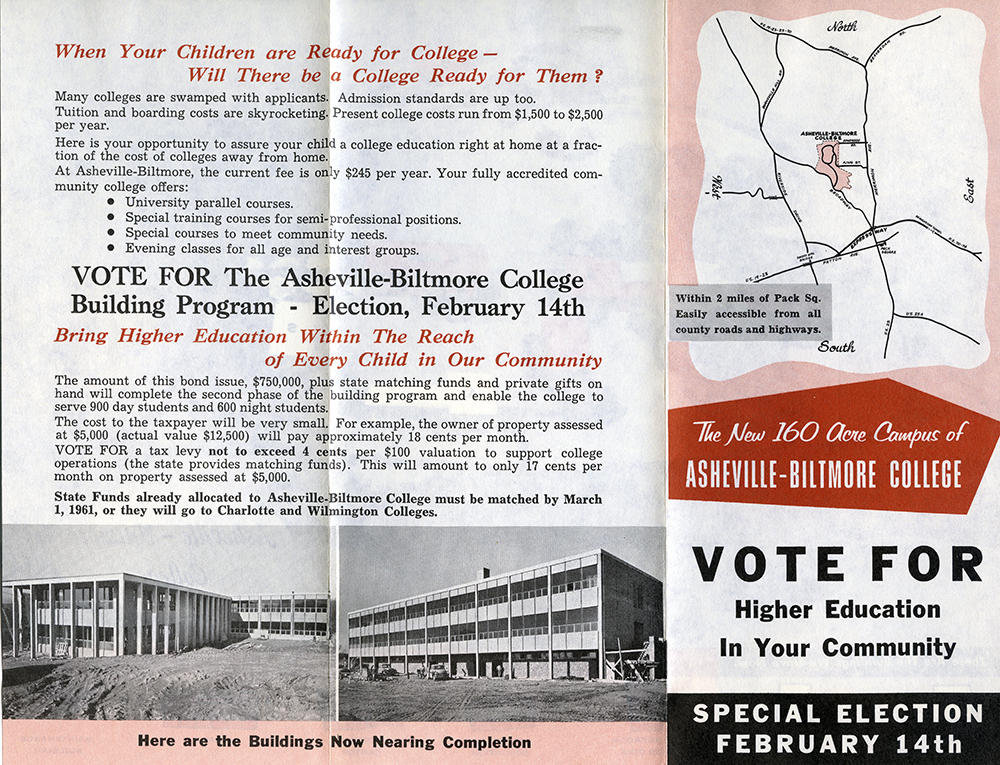
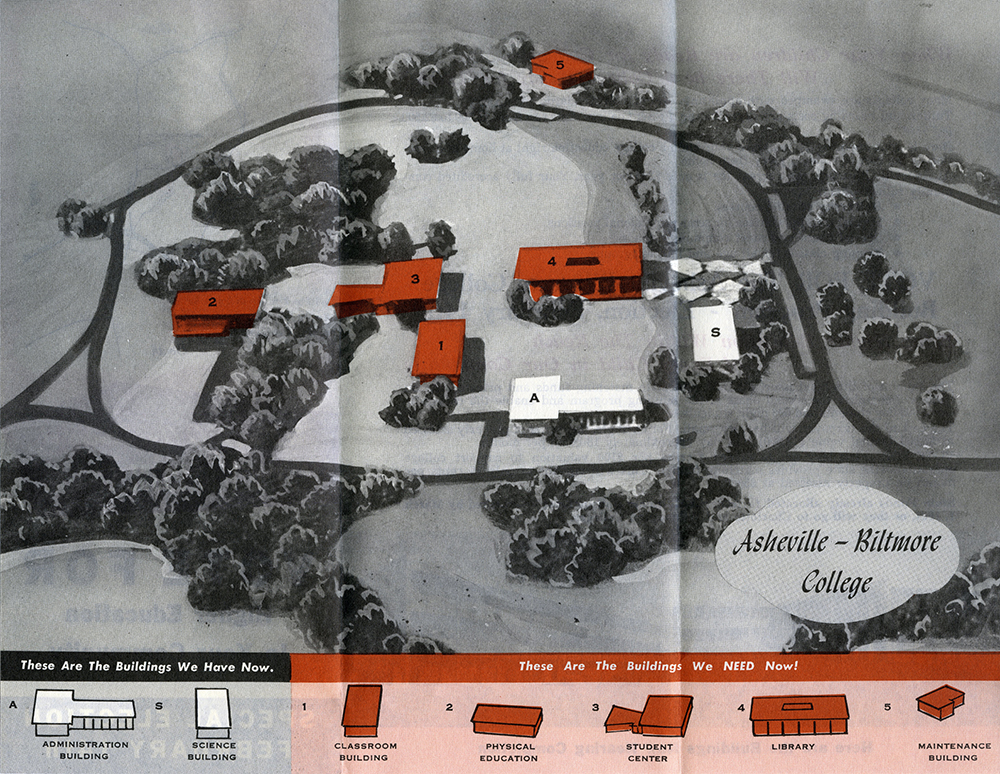
Unlike 1958, there is no record of any opposition to the bond issue from the African-American community. This may well have been because the college already had plans to integrate; the first two African-American students enrolled at Asheville-Biltmore in the fall of 1961, so it seems likely that this opportunity would have been known in February.
A key part of the bond campaign was emphasizing the affordability of Asheville-Biltmore. Campaigners highlighted that tuition at the college cost $245 per year, compared to approximately $1,250 at Chapel Hill. Students and parents would be able to achieve this $1,000 saving for “just $4.16 extra per year”, that being the cost of the bond issue and 4% tax to a taxpayer.
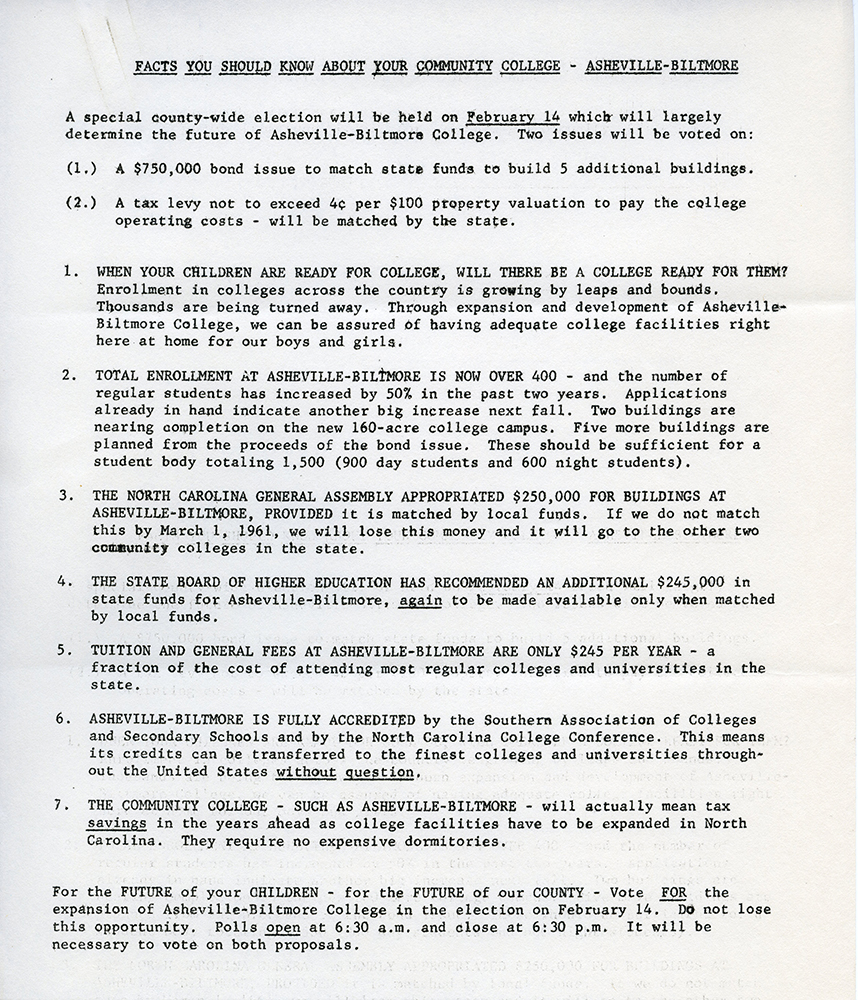
The campaign was a success, and the result was an overwhelming endorsement of Asheville-Biltmore. There were 7200 votes for the bond issue, and only 2713 against, whilst 6345 voted for the additional tax levy, with 2820 opposed.
On the day after the vote, Asheville-Biltmore President Glenn Bushey wrote an editorial in which he described the vote as “giant step forward” for the citizens of Asheville and Buncombe County. He went on to say, “All too often, the Southeast is regarded as lagging behind other areas of the country in extending the benefits of education. It may be true that we cannot afford as much. But this vote has demonstrated that we do believe in education and will support it to the best of our ability”.
Within a few months of the October 1961 dedication, work was underway to construct the library, a maintenance building (since demolished), the student union building (now Lipinsky Hall), and physical education building (now the Justice Center).
The campus was beginning to take shape.
- Colin Reeve, Special Collections

